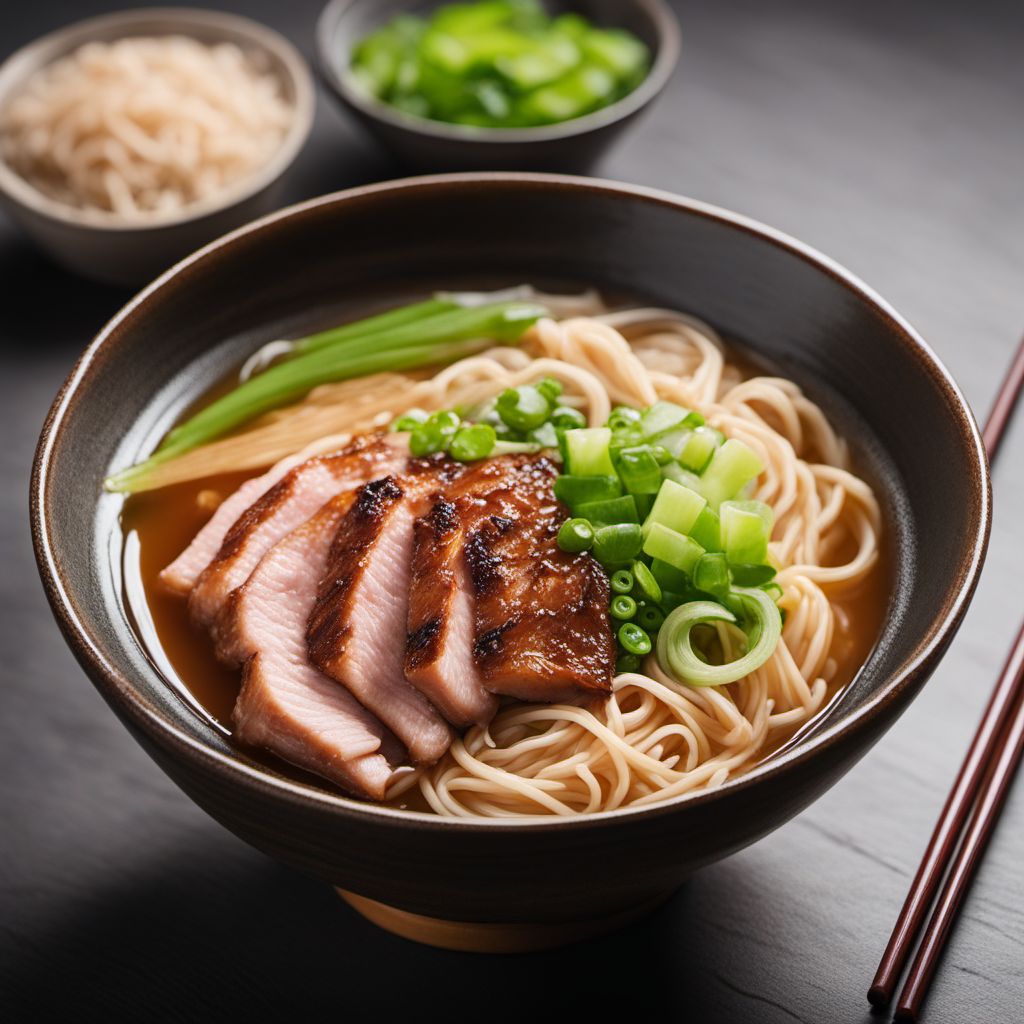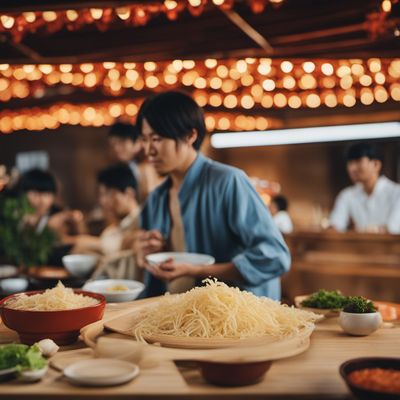
Recipe
Homemade Hakata Ramen
Savory Delights: Homemade Hakata Ramen - A Bowl of Japanese Comfort
4.8 out of 5
Indulge in the rich flavors of Japan with this homemade Hakata Ramen recipe. This iconic dish from Japanese cuisine is known for its creamy tonkotsu broth, tender chashu pork, and perfectly cooked noodles.
Metadata
Preparation time
20 minutes
Cooking time
2 hours
Total time
2 hours 20 minutes
Yields
4 servings
Preparation difficulty
Medium
Suitable for
Omnivore, Pescatarian (if chicken broth is substituted for fish broth), Dairy-free, Nut-free, Shellfish-free
Allergens
Pork, Chicken, Eggs, Soy
Not suitable for
Vegetarian, Vegan, Gluten-free, Paleo, Keto
Ingredients
-
4 cups (946ml) pork bone broth 4 cups (946ml) pork bone broth
-
1 cup (235ml) chicken broth 1 cup (235ml) chicken broth
-
1 tablespoon soy sauce 1 tablespoon soy sauce
-
1 tablespoon mirin 1 tablespoon mirin
-
1 teaspoon sesame oil 1 teaspoon sesame oil
-
1 teaspoon salt 1 teaspoon salt
-
200g Hakata-style ramen noodles 200g Hakata-style ramen noodles
-
4 slices of chashu pork 4 slices of chashu pork
-
2 soft-boiled eggs 2 soft-boiled eggs
-
2 green onions, thinly sliced 2 green onions, thinly sliced
-
Pickled ginger, for garnish Pickled ginger, for garnish
Nutrition
- Calories (kcal / KJ): 450 kcal / 1884 KJ
- Fat (total, saturated): 15g, 5g
- Carbohydrates (total, sugars): 50g, 5g
- Protein: 25g
- Fiber: 3g
- Salt: 2g
Preparation
-
1.In a large pot, combine the pork bone broth and chicken broth. Bring to a simmer over medium heat.
-
2.Add the soy sauce, mirin, sesame oil, and salt to the broth. Stir well to combine.
-
3.Cook the Hakata-style ramen noodles according to the package instructions. Drain and set aside.
-
4.In a separate pan, heat a small amount of oil over medium heat. Add the chashu pork slices and cook until heated through.
-
5.To assemble the ramen bowls, divide the cooked noodles among serving bowls. Ladle the hot broth over the noodles.
-
6.Top each bowl with slices of chashu pork, a soft-boiled egg cut in half, sliced green onions, and a small amount of pickled ginger.
-
7.Serve immediately and enjoy!
Treat your ingredients with care...
- Chashu pork — For a more tender and flavorful chashu pork, marinate the pork slices in a mixture of soy sauce, mirin, ginger, and garlic overnight before cooking.
- Soft-boiled eggs — To achieve the perfect soft-boiled eggs, bring a pot of water to a boil and gently lower the eggs into the boiling water. Cook for exactly 6 minutes, then transfer to an ice bath to stop the cooking process.
Tips & Tricks
- For an extra layer of flavor, add a dollop of spicy chili paste or chili oil to your ramen bowl.
- Customize your toppings by adding bamboo shoots, nori seaweed, or corn kernels.
- If you prefer a thicker broth, simmer the pork bone broth for a longer period of time to extract more collagen.
- Adjust the saltiness of the broth by adding more or less soy sauce according to your taste preference.
- Leftover chashu pork can be stored in the refrigerator and used as a topping for other dishes like rice bowls or stir-fries.
Serving advice
Serve the Hakata Ramen hot in individual bowls. Encourage your guests to mix the toppings and noodles with the broth before enjoying. Provide chopsticks and spoons for a traditional eating experience.
Presentation advice
To enhance the visual appeal of the dish, arrange the toppings neatly on top of the noodles. Sprinkle some sesame seeds and finely chopped green onions on top for an added touch of freshness.
More recipes...
More Japanese cuisine dishes » Browse all

Goma dango
Goma dango is a traditional Japanese sweet that is made with mochi rice flour and black sesame seeds. It is a simple and flavorful dish that is...

Menma
Menma is a popular Japanese condiment made from lacto-fermented bamboo shoots. It is commonly used as a topping for ramen and other noodle dishes.

Mizu manjū
Mizu Manju
Mizu manjū is a traditional Japanese sweet that is made with rice flour and sweet red bean paste. The dish is easy to make and is a popular snack in Japan.





